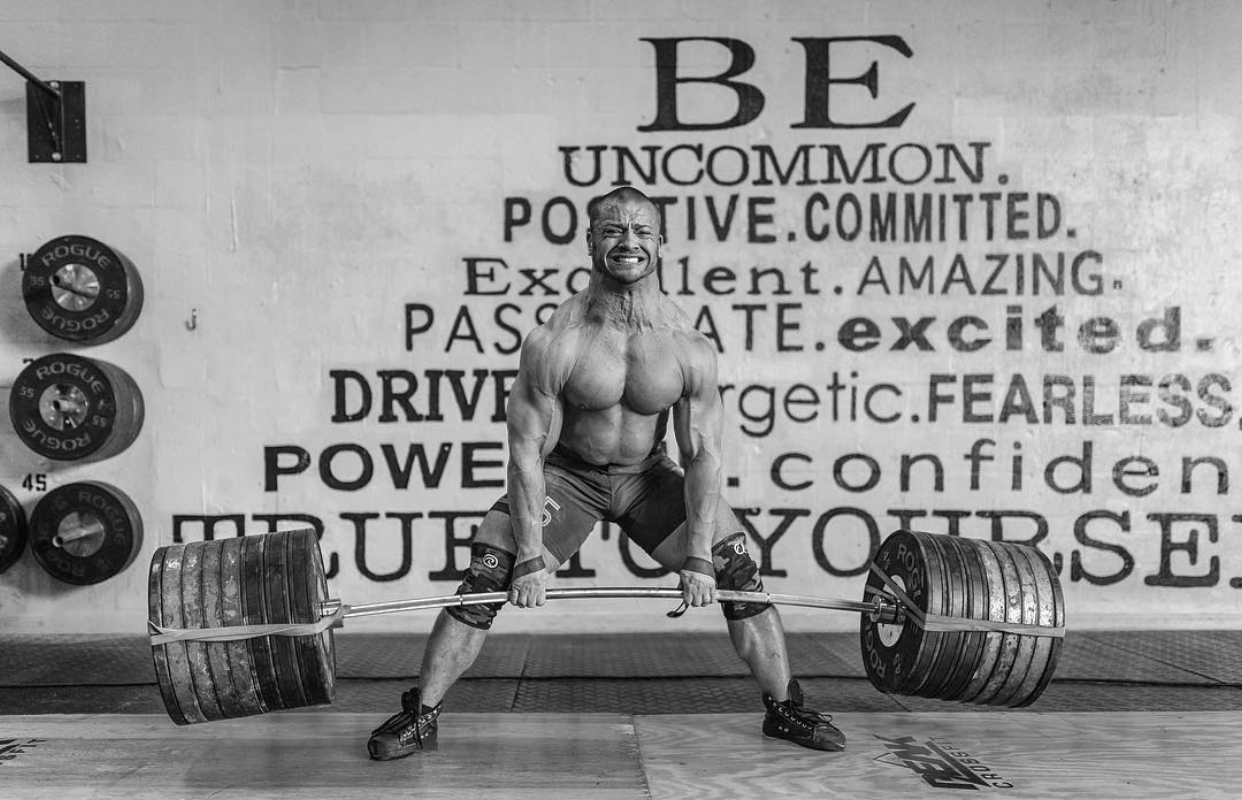- Performance does not function as a straight-line year around. There must be proper peaks and troughs (offseason and peaking blocks) in order to surpass previous bests.
- Hydration is massive. This is a function of fluid, carbohydrate, and electrolyte consumption. Most athletes do not hydrate as effectively as they could.
- Train with good technique to reinforce your SKILL at the lifts, train muscle groups properly, and avoid injury. Don’t grind lifts you don’t deserve to attempt that day, or you’ll end up broken after a while.
Intensity. Coming from CrossFit, there was no concept of intensity. Meaning, the expectation was to simply go hard every day, year round. This is an insanely unrealistic expectation for the human body. The body functions in peaks and troughs, and I tell people this ALL. THE. TIME. If there is no periodization to your training, and no offseason, then you hit a ceiling, and just sputter along right around that. You have to cycle off the maximal every day training approach so you de-acclimate to training, so you can then peak properly and overreach, then taper for a competition giving your body time to overcompensate to get above that ceiling. In powerlifting (albeit through some trial and error, and an injury or three) I learned how to build from a volume phase, into a strength phase, into a peaking phase with deloads spaced in between, followed by a taper the last week or two. When you are an athlete, and you compete on a singular day or even multiple days, you do NOT have to be at your best on any given day leading up to that event. You must be your best at that event. Train in a way so you are at your best at that event, not the months prior leading up to it.
Hydration. Quite possibly the biggest realization I made when it came to powerlifting and performance in general in the recent past was literally the experiential realization of just how large of an impact hydration plays on strength and performance, and when done properly, how fast you can actually go from a state of weakness to a state of maximal strength. Ironically, my very first powerlifting meet in late 2016, a close friend of mine convinced me to do a cut from 223 lbs to 198 lbs. I had seen some things like this people from a handful of athletes I knew, doing hard cuts. So, not knowing what I was getting myself into we will just say I embarked on one of the most miserable yet enlightening experiences of my athletic career. I dropped from 223 to 197 in 24 hours via diuretic supplements, mild osmotic magnesium supplements, and extended duration in the sauna. Not only was it an experience into the effects of extreme dehydration on the body, and what that felt like physically and mentally, but it was also an experience into just how rapid one can rehydrate with the use of IV fluids, and high doses of water, carbohydrates, and electrolytes. I literally went from feeling the weakest and most depraved I’ve ever felt in my life to the strongest I had felt in my entire life in a matter of 24 hours. This experience led to the 2017 CrossFit season where I was prioritizing an intraworkout gallon jug with 100-200 carbs from HBCD, 5g or so of sodium, 2-3g of potassium, and about 800mg of magnesium. There was also around 50-80g of protein in it depending on the day. This led to a massive increase to training performance and exercise tolerance, especially in the Florida heat.
Movement quality over completion. CrossFit focuses on intensity over technique, and completion over quality. To put it plain and simple, this style of training will cause excess wear and tear on your body predisposing you to overuse injuries, and when training at higher loads and intensities, will flat out break you. It took me multiple injuries to learn that submaximal training in the 75-85% range was an effective range of training that minimized the risk of injury while still providing adequate stimulus to improve my strength, technique, and energy systems. It takes practice of a movement, over and over, with as close to ideal technique as possible, to refine that movement and make it as efficient and second nature as possible. Second nature to where you don’t have to think, you set up and it just happens. When you train with poor technique, you reinforce poor technique, which leads to improper muscles being developed, inefficient mechanics, and more energy being used, which makes you ultimately weaker and slower on the clock as a CrossFit athlete due to more rest being taken. Train with ideal technique, always, and you will be stronger, less injury prone, more efficient, and have faster event times.

